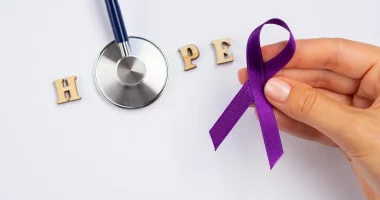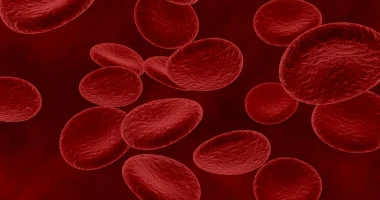Atrial fibrillation (A-fib) is when your heart beats in an irregular way. This can make you feel like your heart is racing, cause chest pain, and make it hard to breathe. It’s a problem because it can lead to strokes and blood clots. Doctors can help by giving you medicine or performing surgery. Sometimes, A-fib doesn’t show any signs, but when it does, you might feel your heart racing, chest pain, or dizziness.
It’s most likely to happen as you get older, but it can also affect younger people sometimes. When you have A-fib, your heart might beat really fast, and it doesn’t pump blood well. This can make blood gather in your heart, which raises the chance of clots forming.
Affects
Atrial fibrillation messes with how your heart works. Normally, your heart has four parts. They are two on top called atria and two on the bottom called ventricles.
Each time your heart beats, it pushes blood from the atria to the ventricles then around your body. Your heart’s beat starts at the top and goes down. There are tiny electrical signals that control how fast your heart beats and make sure the blood goes where it’s supposed to.
But when you have A-fib, these signals get mixed up. This makes the top part of your heart, the atria, shake or move weirdly. This is called fibrillation.
Because of this, your heart might not pump all the blood like it should, and the blood flow doesn’t follow the normal rhythm.
Some people don’t feel anything when their heart’s rhythm is off, but if we catch and treat A-fib early, it can really help avoid problems later on.
Symptoms
A lot of people with A-fib might not feel anything strange, and even if they do, it might not happen all the time. But according to the American Heart Association (AHA), the most common sign is feeling like your heart is fluttering. Other things you might feel include:
- Your heart beating irregularly
- Having trouble breathing, especially when you’re active
- Feeling pain, pressure, or discomfort in your chest
- Feeling dizzy or lightheaded, or even fainting because your blood pressure gets low
- Feeling really tired
- Feeling confused or uneasy
If you’re having these symptoms, it’s a good idea to write them down and tell your doctor about them, even if you already know you have A-fib. That way, they can help you find the best way to feel better.
If A-fib isn’t found or treated, it can lead to other heart problems like having a stroke or heart failure. So, it’s important to keep an eye on how you’re feeling and talk to your doctor if something doesn’t seem right.
Causes
A-fib happens when there are changes in how the heart’s electrical signals work. It can affect anyone, no matter their age, but it’s more common in older ones. Some things that can make it more likely for someone to get A-fib include:
- High blood pressure for a long time, which can make the heart work harder.
- Getting a blood clot in the artery that goes to the lung, is called a pulmonary embolism.
- Having heart problems already, like issues with heart valves, heart failure, heart disease, or having had a heart attack.
- Drinking a lot of alcohol, especially regularly, but even a little bit can cause A-fib in some people. Using drugs like methamphetamine can also be a problem.
- If someone in your family has A-fib, you might be more likely to get it too.
- Having sleep apnea, especially if it’s really bad, can raise your chances of getting A-fib.
- Some other health problems that stick around for a long time, like issues with your thyroid, diabetes, asthma, or being overweight, can also make A-fib more likely.
Treatment
Treating A-fib depends on each person’s age, lifestyle, and overall health. Doctors choose treatments that fit the person best. Some may need medicines, while others might require surgery to fix their heart rhythm. Sometimes, a mix of treatments is recommended.
Medications
- Heart rate control: If someone’s heart beats too fast, medicines can help slow it down. These meds include beta-blockers (like metoprolol or atenolol) and calcium channel blockers (like diltiazem or verapamil). Another option is digoxin, but doctors use it less often now.
- Preventing clots: Blood thinners, also called anticoagulants, might be prescribed to prevent clots from forming. Although these meds can raise the chance of bleeding, they’re essential for preventing strokes in most cases. Doctors use a scoring system called CHA2DS2-VASc to decide who needs these meds.
- Restoring normal rhythm: Healthcare providers may try to get the heart back to its normal rhythm using medications. This is called chemical cardioversion. Drugs like flecainide and amiodarone can help with this. However, even if the heart goes back to normal, most people still need to take blood thinners.
Surgical procedures
- Cardioversion: In some cases, electrical cardioversion might be used. This involves giving the heart a controlled electric shock to reset its rhythm.
- Ablation: This procedure involves using heat or cold energy to destroy small areas of heart tissue that are leading to the irregular rhythm.
- Implantable devices: In certain situations, a pacemaker or a device called an implantable cardioverter-defibrillator (ICD) might be implanted to help control the heart’s rhythm.
It’s important for anyone taking blood thinners to let all healthcare providers know about it, especially before other treatments or surgeries. This helps prevent complications.
Complications
Blood clots
A-fib can lead to serious health issues. One big concern is blood clots. When the heart doesn’t beat normally, blood can gather in the top chambers, called atria. This can make clots form. If a piece of a clot breaks off and travels through the bloodstream, it can block blood flow to important organs like the lungs, brain, or kidneys. This can be dangerous and even fatal.
Stroke
Another risk is having a stroke. This happens when a clot stops an artery in the brain, stopping blood from reaching areas of the brain. Strokes can cause different problems like weakness on one side of the body, trouble with vision, or difficulty speaking and moving. They’re a major cause of death and disability in the US.
Heart failure
Heart failure is also a worry with A-fib, especially when the heart beats too fast. When the heart’s rhythm is off, the amount of blood pumped with each beat can change a lot. This makes the heart work harder, and it can get tired out. As a result, it might not push enough blood to the body, and fluid can build up in places like the lungs.
Cognitive problems
Some studies suggest A-fib might also affect how well the brain works over time. Some research says it could raise the risk of problems like memory loss or dementia, but more studies are needed to be sure about this.
Prevention
Reducing the chances of getting A-fib is possible, even though some factors like getting older or having it in the family can’t be changed. The American Heart Association (AHA) says that making certain lifestyle changes can really help.
It’s crucial to keep health conditions like high blood pressure or diabetes in check since these can raise the chance of A-fib. The AHA also suggests that having a team of different doctors working together can make a big difference in treating and preventing A-fib.
When it comes to how you live your life, there are some important things to keep in mind. Eating healthy foods, staying active with regular exercise, and keeping your weight at a healthy level are key. If you smoke or drink alcohol, cutting back or quitting altogether can also lower your chances of getting A-fib.
Summary
Reducing the risk of atrial fibrillation (A-fib) involves lifestyle changes and managing underlying health conditions. Although factors like aging and family history are beyond control, focusing on a healthy lifestyle can help mitigate risks. The American Heart Association emphasizes the importance of multidisciplinary medical treatment plans to address A-fib. Lifestyle changes such as maintaining a nutritious diet, regular exercise, and weight management play a crucial role in reducing A-fib risk. Additionally, controlling hypertension, diabetes, and abstaining from smoking and excessive alcohol consumption are essential preventative measures. By adopting these strategies, individuals can take proactive steps to safeguard heart health and lower the likelihood of developing A-fib.









